Milk Banks and Moms: How Your Extra Breastmilk Can Save Lives with @ucmilkbank Alison Wolf, CPNP, IBCLC
- How just one bag of your pumped breastmilk (4-6 oz) can feed a premature baby for a whole day
- Why donor milk is essential for premature babies in preventing NEC - a devastating bowel disease
- What you can do if you want to become a breastmilk donor…even if you don’t live near a milk bank
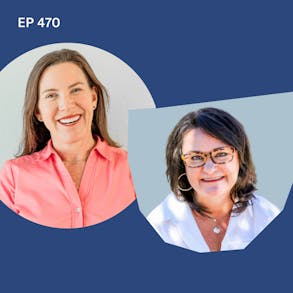
LISTEN TO THIS EPISODE
Episode Description
Your baby starts drinking less breastmilk when they start solid foods…but your breastmilk can help other families beyond your own baby. Alison Wolf, Executive Director of the University of California Milk Bank explains how donating human milk works, who it benefits, why it’s safe and perhaps possibly something you could consider doing.

About the Guest
- Alison Wolf, CPNP, IBCLC is the Executive Director of the University of California Health Milk Bank
- The UC Health Milk Bank provides safe, high quality donor milk for infants in need
- They are the only milk bank owned by a healthcare system and the only physician-led bank in N. America
Other Episodes Related to this Topic
- Episode 459 - Donor Milk: How Donating and Receiving Breastmilk Helped These Moms
- Episode 436 - How Long Can I Breastfeed? with Ronietra Stewart, RDN, IBCLC
- Episode 424 - Breastfeeding & Starting Solid Foods: When Will My Milk Supply Drop Off? with Jessica Smith, MSN, RN, IBCLC
Links from Episode

Latest Episodes
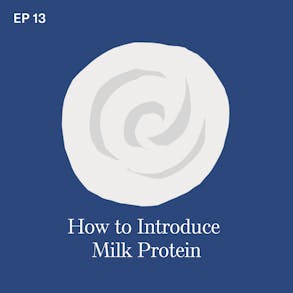
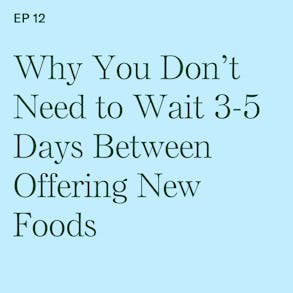
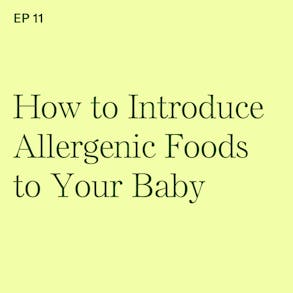
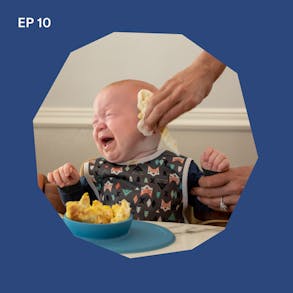
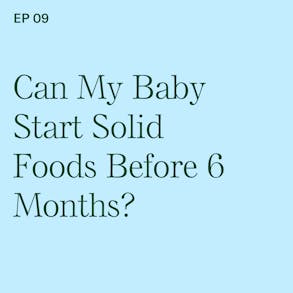
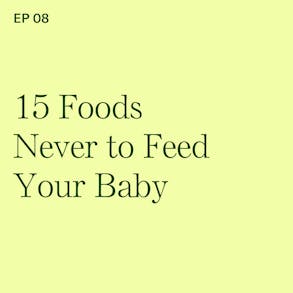
Factor (0s):
Something that I did not anticipate that I would not love as a parent of school age kids is making my kids' school lunches. Okay. I'm so grateful that they're back in school. We're back into a routine, but by the time I get all their breakfast prepared and then all the school lunches made, I have absolutely no time or bandwidth to think about what I am going to eat. Now, as a dietitian, I know how important nutrition is and that's why I love Factors. No prep, no mess Meals Factor is my go-to Workday Lunch solution, they have a full menu of chef crafted meals with options like calorie Smart Protein Plus and keto factors fresh. Never frozen meals are dietitian approved. They're ready to eat in just two minutes. So no matter how busy you are, you'll always have time to enjoy nutritious great tasting meals. If you are looking for a way to minimize your time in the kitchen, a factor meals are ready in two minutes. No shopping, no prepping, no cooking, no cleanup. Head to factor meals.com/weaning 50 and use the code weaning 50. That's five zero to get 50% off your first box plus 20% off your next month. That's code WEANING50 at factor meals.com/weaning 50 to get 50% off your first box plus 20% off your next month while your subscription is active.
Ezpz (1m 18s):
September is Baby Safety Month and my favorite baby feeding gear brand EZPZ is having a major sale right now. You can get 25% off orders of $50 or more at ezpzfun.com. I love the ezpz feeding gear because it's created by their feeding expert to be developmentally appropriate. So it's not only cute but ezpz products. They promote independent eating and they're designed for your baby's age and stage. Take the ezpz tiny spoon, for example. It is a short, fat round handle and a small spoon bowl to promote self-feeding safely. If you compare that to those longhand baby spoons with the huge bowls that are used for adult-led spoonfeeding, they can lead to excessive gagging. And the bowl of the spoon is so big that it covers the entirety of your baby's tongue, which can increase the risk of aspiration. My regular discount code for ezpz is only 10%, so this bump up to 25% is nice. You can get 25% off all the US shipped to orders of $50 or more at ezpzfun.com. Now through September 29th using the code BLW Safety, again, that's code BW safety at ezpzfun.com for 25% off orders of $50 or more. Sale ends September 29th.
Alison Wolf (2m 28s):
We say at about one pump bag of milk, so that four to six ounces, two to six ounces of milk can feed a micro preemie for an entire day that you're able to provide that nutrition and protect them against necrotizing enteric colitis. Even if it's one bag a day, it makes a huge difference in these babies' life.
Katie Ferraro (2m 47s):
Hey there, I'm Katie Ferraro, registered dietitian, college nutrition professor and mom of seven specializing in baby-led weaning, here on the Baby-Led Weaning with Katie Ferraro Podcast. I help you strip out all of the noise and nonsense about feeding, giving you the confidence and knowledge you need to give your baby a safe start to solid foods using baby-led weaning. If you are a breastfeeding chest feeding parent, this episode is for you. I'm currently in the process of working on obtaining my IBCLC lactation credential and with one of the projects last month I had the opportunity to tour the University of California Health Milk Bank.
Katie Ferraro (3m 27s):
So the UC Health Milk Bank is a nonprofit organization. It's based in San Diego where I live, provides access to safe, high quality Donor Milk for infants in need. And you're probably aware of all the different benefits of breast milk, but human milk is especially important for premature infants as it helps dramatically decrease the risk of necrotizing enterocolitis abbreviated neck, which is a life-threatening intestinal disease that primarily affects premature babies. So when my quadruplets were born prematurely, even though I was pumping like crazy, I never made enough breast milk for them and I was so grateful that we were able to receive Donor Milk for free in the NICU. So I was really interested to learn how the process of screening and analyzing and pooling the Donor Milk all works in order to benefit these premature babies. And you know, what does it look like behind the scenes at really the nation's leading milk bank?
Katie Ferraro (4m 12s):
Because you see Health's milk bank is just revolutionizing the process for ensuring the safe provision of Donor Milk for infants in need. They're the only milk bank owned by a healthcare system. They're the only physician led bank in North America. And my tour guide, who is also my guest today was Alison Wolf. She's a pediatric nurse practitioner. She's also an IBCLC. She serves as the executive director of the University of California Health Milk Bank. And their operation is very, very different from the informal milk sharing situations and operations that many of you may be a part of. Some of you may be donating to or received Donor Milk from an accredited milk bank. Some of you may be doing informal milk sharing. Regardless, this episode is all about Donor Milk and how it works, and in particular, how the Milk Bank works.
Katie Ferraro (4m 56s):
So the UC Health Milk Bank works in conjunction with the Human Milk Institute at the University of California at San Diego. They have a lot of researchers that are also, you know, analyzing human milk and some of the benefits that it has, especially for premature babies. So in this interview, Alison executive director is gonna take you behind the scenes of the Milk Bank to explain how just one bag of your pumped breast milk four to six ounces can feed a premature baby for a whole day. She'll talk about why Donor Milk is essential for premature babies in preventing neck, which is that devastating bowel disease, and then what you can do to become a breast milk donor, even if you don't live near a milk bank. Another thing I really enjoyed about this conversation was the very compassionate way that Alison talked about the UC Health Milk Bank's cherry Blossom program for bereaved and grieving mothers nationwide.
Katie Ferraro (5m 41s):
It's thought that about 5% of milk donors are bereaved mothers. So content warning here that this episode does contain mention of infant loss, which may be difficult for some listeners. Alison provides information and resources for bereaved mothers who may be considering donating their milk as they grieve. If that's too, too much and you need to X out at this point, please do. But if you can stick around, I really hope you enjoy this interview with Alison Wolf. She's the executive director of the University of California Health's Milk Bank, and we'll be talking about Milk, Banks and Moms, how your extra breast milk can save lives.
Alison Wolf (6m 14s):
A family comes in unexpectedly, has a premature delivery. So let's say a 25 week gestation, 800 gram baby, mama's most likely sick, she may have preeclampsia, high blood pressure on magnesium, needed a C-section. Baby goes to NICU, mom and baby are separated. She's not able to pump right away because of what's going medical issues that are going on with her. And then in the NICU, the neonatologist, you know, explains the importance of mother's own milk of Donor Milk of optimal nutrition and wanting to start early feeds to get the intestines working normal flora, all those things.
Alison Wolf (6m 56s):
But unfortunately, mama's milk supply is delayed because of all these things that are going on. And so they bring up the benefits of Donor Milk if mother's own milk is not available. And that baby being able to get that tiny little drops of Donor Milk that first couple days, those first couple weeks until mother's milk comes in and she's able to supply that for her baby. They go home, the baby goes home from the NICU a couple months later, able to get all of mama's own milk and either she has an excess supply sorted up in the NICU or she's been pumping a lot and she ends up with an excess supply and she wants to donate because she knows how important those those first couple days were and what it meant to her to have that Donor Milk available and what it meant for the health of her baby.
Alison Wolf (7m 42s):
And wanting to, to give that back to invest that back, pay it forward. And it just really, it's it's, it sends this message of this, the importance of this like breast milk feeding community, being able to access Donor Milk if you need it, and then also being able to donate if you have extra. And it just creates again, this community, this breast milk feeding community. Alison,
Katie Ferraro (8m 4s):
Can you give us a brief overview of what the UC Milk Bank does and then the services that you provide to families in need?
Alison Wolf (8m 12s):
Absolutely. So I, I'm gonna go back a little bit farther in history. So in the 1990s, UC, San Diego Health was actually part of the beginning of the baby friendly movement of the 10 steps to Baby Friendly. And in the early two thousands, we established the SPIN program in the NICU or the supporting Premature Infant nutrition program, again, implementing the best, best practices around optimal nutrition and breast milk feeding. And it was during that time that we really realized the significance of Donor Milk in reducing neck necrotizing enteric colitis and the importance of the availability and equitable access. And that's when we decided, okay, we need to open a nonprofit milk bank in Southern California to be able to serve these families, serve the community.
Alison Wolf (9m 3s):
And then we opened in 2020 and we are able to take milk donations. We are part of habana, which is the Human Milk Banking Association of North America. It accredited nonprofit milk banks. So we are able to accept breast milk donations, screen test process the milk, and distribute it back into NICU's hospitals and the community as it's needed.
Katie Ferraro (9m 28s):
And can you just briefly explain what the baby friendly movement is? If people are not familiar with that?
Alison Wolf (9m 33s):
It is a movement to optimize breast milk access or feeding for infants. And so it's based on the 10 steps and they recently expanded it to, into the NICU and how, how we, how hospitals can support families in their Breastfeeding journey. And it just best practices.
Katie Ferraro (9m 52s):
And I remember I we're from the San Diego area, so you know, we've worked in the same hospitals and I had my first child at one of the hospitals when it was not baby friendly. And then when I had my quadruplets, it had been designated baby friendly in the interim. And I can tell you like just the world of difference that you would experience as a patient was like so amazing. It was, they were so helpful and encouraging to keep me motivated to be pumping when my quads were in the NICU. And I think that the program was amazing because the staff was just so committed
Alison Wolf (10m 21s):
And it's really about education of the, of every single staff member in that hospital who's gonna have contact with that mother, with that baby, with that family, and really being able to con send that consistent mess message around breast milk feeding.
Katie Ferraro (10m 35s):
Why is donor breast milk so critical for certain infants and like what types of situations or conditions make Donor Milk essential?
Alison Wolf (10m 42s):
Our whole goal at the UC Health Milk Bank is optimal growth, nutrition and what we call neck prevention or necrotizing and enteric colitis. So neck is a devastating bowel disease that at risk infants it can develop and it, so being at risk infant is usually less than 32 weeks gestation, less than 1500 grams, some other bowel issues, cardiac issues, growth restriction, whatnot. And it puts 'em at risk. So this neck is not something that your full-term baby at home is at risk for anything like that. This is specifically for premature infants and neck is a multifactorial disease. We don't know exactly what causes it and we don't know a hundred percent how to prevent it.
Alison Wolf (11m 26s):
But the one thing we do know protects against neck is mothers is breast milk. So mothers own milk if it's available and if it's not available or not sufficient, using Donor Milk we know is protective against neck. It's not a hundred percent risk reduction, but we know that it does help.
Katie Ferraro (11m 43s):
Hey, we're gonna take a quick break, but I'll be right back.
Katie Ferraro (12m 26s):
Can you walk us through the process of testing and ensuring that the donor breast milk is safe? Like what sort of measures are in place to ensure the safety of the milk for the recipients?
Alison Wolf (12m 36s):
Absolutely. 'cause this is a question that we get a lot and it's one of our, you know, key quality steps is really to make sure that this milk that's going to these teeny tiniest little micro preemies is a 100% safe. And so we do abide by habana standards. So they, they have very strict specific standards on how to screen, how to test, how to process the milk. But kind of starting from the very beginning, we have a screening process, it's very similar to blood donation. We ask a lot of the same questions about medical history, medications, social history, those type of things. We get a consent from the prenatal provider saying, yes, that this, this mother is safe to donate her milk.
Alison Wolf (13m 20s):
We verify this in some interview questions. And then the donor comes in either remotely or locally in the area or out of area, gets a blood test. It is very similar to the screening test for blood donation screening for any communicable diseases that could potentially pass through the breast milk. We then get the milk and we do a nutritional analysis checking for calories and fat and protein. And then we're able to pool about five to seven donors together to get a adequate calorie and protein count. We wanna make sure these babies are gonna be gonna be growing well off the milk. We send a pre pasteurization culture checking for bacillus, we then heat pasteurize the milk using the holder pasteurization to kill any potential viruses or bacteria.
Alison Wolf (14m 6s):
And then after pasteurization, we send a second culture to make sure that there's nothing growing in the milk. A lot of these, there's two person verifications along to the way to make sure all these safety steps are met. And only after all of this is done, the screening, the testing, the pasteurizing, are we able to approve the milk for distribution.
Katie Ferraro (14m 26s):
I have to say the whole operation was so impressive just watching the milk techs at work, I can actually see them in the background of where you're doing this interview from, which is really cool. But it does really, I think, I think it's important for the average person in the public to know, because I think historically, you know, breast milk banking, and we can talk about this a little bit, it, it was much more loosey goosey, you know, for lack of a better word. And you guys really have elevated the bar with regards to the science and the testing and ensuring, you know, just give us some ideas of, you know, if you were to just use some randos breast milk, like obviously you hope people have the best intentions at heart, but what, what would be some of the side effects of not doing all of these standards for testing and safety?
Alison Wolf (15m 5s):
Absolutely. And I just, just 'cause you did mention them, you can see them behind me. They are in full PPE, I mean, this is, that is a lab they scrub in. They will full PPE, we're very, you know, very careful with what's getting in, touching the milk, who's handling the milk. They're all diet technicians who are trained specifically. So they're amazing and they're meticulous and they know exactly where this milk is going and how important all those safety steps are. And so that goes back to, so this informal milk sharing, the issue is when it comes to that, you're getting it off Facebook or the internet and it, it's different if it's your sister or your best friend and you know them very well, you know, their medication history, their, their all social history, all those other things.
Alison Wolf (15m 49s):
But the problem is, is even though people are very well intentioned that they wanna share their milk, they wanna help their neighbor, they wanna help their friend, whatever it may be, they may not know what is in the milk or we don't know, they don't, may not know all the safe handling or storage or medications or risk factors or communicable diseases and all these other things that go into it. The other part of informal milk sharing, although you're helping your friend and your neighbor or you know, somebody in the community, that milk isn't able to go to these teeny tiny little preemies who really, really need it. That that it is the difference between potentially saving the milk as medicine and could be saving their life is such an important when you're, when you're thinking about donating, not that you can't donate to both.
Alison Wolf (16m 33s):
I mean you can donate to a friend or to a neighbor, but also donate to these micro preemies who really have the medical necessity for that breast milk.
Katie Ferraro (16m 40s):
And I think it's so amazing that even just, you know, one day of you pumping milk can extend the life of a preemie for a couple of days. Is that correct? 'cause they're, they're taking so little,
Alison Wolf (16m 52s):
So this is a general approximation, but we say about one pump bag of milk, so that four to six ounces, two to six ounces of milk can feed a micro preemie for an entire day. And so that, that you're able to provide that nutrition and protect them against necrotizing enterocolitis. So even if it's one bag a day, it makes a huge difference in these babies' life.
Katie Ferraro (17m 15s):
I know that there are moms listening who are like, wait a minute, I I can do this. I have some extra breast milk, or I would like to help these super preemie babies. What criteria do potential milk donors need to meet? And then how do you determine if someone's eligible to donate their human milk?
Alison Wolf (17m 30s):
You know, a healthy mom who has an ex extra supply of breast milk. And so we use habana guidelines, that's who where the, they have specific standards of who could donate. There's some medication deferrals, some health deferrals, communicable diseases, those type of things. Some social risk factors. But what we do is we potential donors answers some questionnaires and then we have a phone interview to clarify any questions. But really a healthy woman with an excess supply of breast milk for whatever reason. And some, I know you didn't ans ask this question, but like sometimes it's just a freezer clean out. Let's say somebody's getting ready to move and they have a huge freezer full that they can't take with them. Sometimes it's a freezer full and baby doesn't like the frozen milk 'cause of the high lipase, or they developed a dairy allergy and can't use that milk.
Alison Wolf (18m 18s):
Or it's sometimes just families who have an excess supply of, of breast milk, they're pumping, maybe their baby didn't feed well initially and they started pumping and now have this big excess supply and they have this extra breast milk that they can share.
Katie Ferraro (18m 31s):
What's the exclusion criteria like? You mentioned some of the, the like social factors. Is it like illicit drug use, alcohol? What makes you ineligible to be a donor?
Alison Wolf (18m 38s):
So illicit drug use, excess alcohol use. There are some criteria of pumping and length after alcohol use and whatnot. Nicotine, some medications, but usually they are a deferral period. So maybe mother had to go on antibiotics 'cause of mastitis. We would have to exclude milk from that time period. But not overall. There are some medications for chronic diseases that we aren't able to accept the milk, but again, that's part of the screening process. And then any high risk social risk factors, multiple sex partners, IV drugs, you know, anything like that that you would think of any risk for bloodborne pathogens or bloodborne diseases.
Katie Ferraro (19m 23s):
So if a potential donor says, okay, yes, I I meet the criteria to donate, what does the screening process look like for them? And then like, what steps do they have to go through in order to collect and store milk so that it's in alignment with your guidelines at the milk bank?
Alison Wolf (19m 36s):
Right. And we'd like to say our screening process is vigorous, but we try to make it as simple as possible because we know how much time it takes to pump, to freeze, to label, to go through all these steps on top of being a mom of maybe a newborn or multiple kids. And so we really try to simplify the process as much as we can. So the first step is to go to our website that has a link to our, what we call our donor portal, where people can get a login and sign in, they sign some consents and answer two brief questionnaires, one about the baby and one about themselves. Again, going over medical history, medication, social history, those type of things. And then all the communication is done through this online portal.
Alison Wolf (20m 19s):
Again, trying to make it as easy as possible. It could be done from a mobile device, from a laptop, those type of things. And then we set up a, a brief 10 to 15 minute phone interview to again, just clarify any questions going over the questionnaires, any concerns, talk about steps, next steps and safety type things. We then ask for a consent from the prenatal provider just saying yes, as far as they know, mother's in good health, no concerns. And then if they're local, they come to the blood bank, the milk bank is located inside the San Diego Blood Bank again. 'cause we get a lot of this best practices from the blood banking community. So they come, they drop off their milk for local donors, it's a hundred ounce minimum.
Alison Wolf (21m 2s):
They get their blood drawn at the same time they get their blood test. And then once we get those results back, we can approve them for out of area donors. It's a very similar process. Those first steps are exactly the same except for we send a requisition for a lab, draw any Quest lab near them, no cost. And then we send boxes and prepaid FedEx shipping labels and FedEx picks the milk up at their home. Hey,
Katie Ferraro (21m 26s):
We're gonna take a quick break, but I'll be right back Can I ask you about the prenatal provider consent?
Katie Ferraro (22m 25s):
Like, is that a barrier? Because what if it was a long time ago that you had a baby? Do you have to go make an appointment with your doctor to have them say, yes, you had a baby?
Alison Wolf (22m 32s):
So that's a really good question. And yes, I would say that is our biggest kind of rate limiting step. That's the step that sometimes takes the longest. So what we have, we do have some workarounds, but really what we do is when people sign up, we let them know, reach out to your provider, we can fax them, we can reach out to them. That takes a, usually a, a bit longer to get a response. But now with everything, the electronical medical record, you go onto MyChart, you can put in a, you know, send them the, the consent letter, they send it back electronically, you know, really we're getting like a 24 hour turnaround. And most donors are in within baby's first year. So they're, they're going back to their either their midwife or their OB and they're seeing them so they have a relationship with a bigger health system, maybe with Kaiser or something like that, using that electronical medical record and se you know, sending it electronically, getting it back electronically is much easier than trying to make that appointment.
Katie Ferraro (23m 28s):
I love that you mentioned fax is like, doctors are literally the only people on the planet still using fax. It's like I, they're keeping Oh yeah, the fax machine industry alive. So you had already mentioned some of the benefits, you know, the, obviously the helping the super teeny tiny preemies and the prevention of neck is huge. But what are the other incentives or benefits for moms who are maybe on the fence about doing this? Like what are some things you hear about why moms choose to donate human milk?
Alison Wolf (23m 52s):
So definitely the benefit of knowing they're impacting another baby's life, a family's life, really that paying it forward. And our donor coordinators are amazing at really educating families about where your milk is going. It's not just nutrition, it's medicine, it's going to help other families and other babies. The other thing is every donor gets a nutritional analysis of her milk. So that includes calories, fat, protein, carbohydrates. And we send them a little nutritional card with all their information on it about it, but it also reinforces like, wow, that's, that's my breast milk and maybe they have a high cal high protein breast milk.
Alison Wolf (24m 33s):
And we let them know that's going to the little tiniest babies. And it really incentivizes women to be like, you know what, I'm gonna pump an extra time a day because I know where this milk is going and who it's helping. And it really, it, our donors are amazing. They're, they're doing it from the goodness of their heart and they are so grateful to be able to give back. And it involves the entire families when they come for drop offs, grandma and auntie and dad and the kids are all coming and they were all part of this. They were all part of, you know, helping make this milk and make this donation. So it just, it's amazing what they do and what they, how they contribute to helping.
Katie Ferraro (25m 12s):
I thought the most fascinating part of the tour was watching the Milk Tech do the nutrition analysis and seeing the pooled milk. Like, okay, your milk is perfect for your baby, but you're donating it to someone else so they, you don't add anything else, it's just the pooled breast milk. But you mix it to get the certain protein and calorie content. And then just that nutrition facts panel was so cool of like, this is your individual breast milk and it would be such a cool thing to put in your baby's baby book and then be able to say, you know, the milk that I made for you also went to help these other really needy children. So just curious about misconceptions about donating breast milk. Like what are the fallacies or the falsehoods that you hear and how do you address these concerns with potential donors?
Alison Wolf (25m 52s):
I think what we hear the most is, oh, donating to a milk bank is really hard. It's really difficult. It's, it's, the process is just too much to do. So again, we real, we we, and we need it to be rigorous because we need to make sure that the milk that's going to these babies is safe. But we really do try to make it as simple as possible. So the online portal, you know, helping people manage that prenatal consent, because that is kind of a stumbling block. We have different ways we can help with that. And just accommodating family outta area donors or in area donors, you know, just so making that process as simple as possible for very busy people. The other part of it, I think what I hear is kind of a myth is like, well you can either do informal milk sharing or, or donate to a milk bank.
Alison Wolf (26m 39s):
And I think you can do both. I think you could donate to your neighbor or to your friend, but you could also donate to a milk bank and help these preemies. It's, it's not an all or nothing thing. And some amazing women make extraordinary amounts of milk and they're able to share that in multiple different ways.
Katie Ferraro (26m 57s):
I think the takeaway message when I saw your whole operation was like, yes, this is rigorous, but it's totally worth it and doable. Like this is a lot of expense and time that your staff is going to to ensure that it's safe because it's going into the teeniest tiny premature babies. But wow, like, you know, hard things are worth doing and feeding your own child and pumping like it is a lot. But wow, you're, you're literally extending the life of a premature baby, you know, when else will you get that opportunity? I was really touched by the Cherry blossom program that you explained and showed me on our tour. Could you explain how that works? How it came to fruition? Who can participate
Alison Wolf (27m 34s):
Nationally, about 5% of milk donors are bereaved donors. And so that could be a neonatal loss, a fetal loss, or even a SIDS death and donation is a way for families to grieve and process and, and, and work through this, their whole grieving process. And so we created the cherry blossom program. We chose the cherry blossom because it is the most beautiful but shortest lasting blossom. And we actually have a big cherry blossom tree mural on, on our front wall where we have little ceramic cherry blossoms with the baby's names that families are able to put on there. And when we started this, we were initially gearing it towards the NICU and being able to support families in the NICU.
Alison Wolf (28m 20s):
And I worked 20 plus years for the newborn service service at Jacobs Medical Center. And working with lactation and working with all this, we really found this big gap in care, actually with the intrauterine fetal demise. And so these families come in with a fetal loss, they deliver the baby and normally go home within about 12 hours. They don't have a pediatrician, they don't have a lactation consultant, they don't have a pump and they don't have a baby. And on day two or three when they get engorged, a lot of times they haven't even gotten any lactation education and they have no idea what to do. And so we created this program to really help these families, number one, have access to education to know, again, you're not gonna be able to really give them much in the hospital except maybe a flyer.
Alison Wolf (29m 9s):
And we have cherry blossom bags that they go home with that has a double electric pump or a hand pump of information on suppression, pumping for comfort and donation if that's something they wanna do. And a little memory stone and some other things. And so these families at a couple local hospitals and at area hospitals, they get this flyer and they get this bag if they choose and they go home with it. So again, just a quick touch base with lactation before they go home. And so then on that day two or three or when they get engorged, they, they have something to reference to. They did not have any control over the situation. And we want them to have education and control over their decision of what they do when their milk comes in.
Alison Wolf (29m 50s):
And donation is not for everybody, that isn't the point of the program, but for the people who donate, they really say that it, it saved their lives, it gave them something to do, it gave them meaning outta something that was terrible, very similar to organ donation, that this is something that made, that they only, they made with their baby. And we really like to acknowledge that these women are mothers, that their baby is a baby and has a name and really just help them and their family walk through the process. So our goal would be that any family would have access to this information. And we do, we, like I said, we are in some hospitals, but even for, it's not UC, San Diego Health Limited, it could be any family anywhere.
Alison Wolf (30m 32s):
We can overnight ship them a bag and information and just be here to help support them.
Katie Ferraro (30m 37s):
The cherry Blossom mural at your facility is just, it stops your heart. It's so beautiful. Once you realize that every name there, the names on there, it's the mom and the baby. Is that how it works?
Alison Wolf (30m 47s):
It's the baby's name. And so it's the baby's name on there. It's just honoring their baby. And, you know, having, and we, it's just a lot of times these are kind of, again, the fetal demise more so are kind of forgotten, you know, people are uncomfortable talking to them. They, they don't know what to say, you know, they were, you know, they lost a pregnancy. It could even be third trimester coworkers, friends, family. They don't know what to say, so they just don't say anything. And they aren't acknowledged that you're a, they're a mother and a father and you know, or the siblings, they're, they're still siblings and there is a baby who, you know, who there wa is a, there was a life. And so I think it's just really important to kind of say it out loud and acknowledge like that yes, this is, this is something that happens.
Alison Wolf (31m 33s):
And being able to, to put that blossom and be able to say, yes, that my ba my baby was here.
Katie Ferraro (31m 38s):
I wanna ask for parents who are listening caregivers, mothers who are pumping, especially if they don't live in San Diego. If you're in San Diego, the, you see Milk Bank and all linked to it. But how do you get involved if you're outside of the Southern California region? Do, are there local milk banks or can your, like you said FedEx boxes be shipped. What, what can a mom in Massachusetts do if she wants to have give Donor Milk? Yes,
Alison Wolf (32m 2s):
We can accommodate anybody anywhere. You know, again, the Quest labs are everywhere. The FedEx boxes can go anywhere. We are happy to help support anybody. But if you go to the habana, so if you just, it's HMBANA website, there is a find a local milk bank, little kind of, you click on it, you put in your zip code or there is a map and it shows you exactly a local milk bank closest to you. And the majority of these milk banks do have some sort of shipping mechanism. So it doesn't have to be that you're within a couple miles of it or you know, whatnot. There's mechanisms to help support people in every area of the US and North America.
Katie Ferraro (32m 39s):
Hey, we're gonna take a quick break, but I'll be right back.
Katie Ferraro (33m 51s):
Well, Alison, I just wanna close out by asking I, you are the perfect spokesperson. You are such an advocate for the work that your team is doing at the UC Milk Bank. I know you guys are really on the cutting edge. So what are your hopes or your plans for the future of Milk Bank? How do you see the role of milk banks evolving? And is that gonna be based on the work that you guys are doing at the UC Milk Bank?
Alison Wolf (34m 13s):
Yes, I believe that it will be. We are in this amazing position of, you know, the Milk Bank was founded by Dr. Lisa Stalag and a pediatrician. I'm a pediatric nurse practitioner at IBCLC. We are part of the UC, San Diego Health system. We have the University of California Health name. We are associated with the UC, San Diego Human Milk Institute. We have not only the backing and resources of the health system, but also the whole academic campus side. We're very active in research, really finding out what, what is the optimal pooling practices to make sure that we have the best quality milk to help these babies grow in the NICU.
Alison Wolf (34m 59s):
What is the difference between giving them a higher protein, Donor Milk versus a lower protein milk? What's their growth velocity? Really advocating for evidence-based practice, highest level of technology possible, and how do we continue to grow this and work with neonatologists, work with nutritionists, work with specialists in the area to really optimize what we're doing, how we're growing these babies, how are we protecting them? And then bringing that back to the milk banking community to help them grow. 'cause that's where it's going. And babies are only being born more and more premature, you know, prematurely and viability wise. We're able to save younger and smaller babies, but that's only gonna make this even more important.
Katie Ferraro (35m 42s):
I have to tell you in it's, in preparing for this interview, my niece was over helping watch some of my kids and she's starting high school, and so I have two babysitters at any given time. One, her brother's there too. She was a 25 weeker and he was a 24 weeker and she's going into ninth grade. He's going into eighth grade, and they're, they're only, like, they're not a full year apart. My sister was in the NICU for like almost a year. It was just awful. But they're in regular school, they are thriving. They, they both have some cerebral palsy and they've worked with a lot of therapists, but like, they were there watching my kids and we were talking about Donor Milk, and then they were, they got Donor Milk when they were in the NICU and they were like, oh my gosh, that helped save our lives. I was like, yes. I'm talking to the lady today who runs the whole milk pink.
Katie Ferraro (36m 24s):
Like literally the person that helped you get that Donor Milk so that you can thrive and become the amazing teenager that you are today. So, I'm crying now as I say that, but thank you for all of the work that you do. I, if I wanna share all of the resources, it will all be in the show notes, in the description where you guys are listening, but what's the UC Milk Bank website again, for those who want to go on right now and click that button to become a donor.
Alison Wolf (36m 46s):
So UC, milkbank.ucsd.edu. I did love that last thing you said, just because I think that really, that, that's the whole point, is creating this community and sending that messages that you can really, really impact another person's life. And look at your niece and your nephew and, and your quads and, you know, one of our donor coordinators had a one pounder, you know, in the NICU and that it, it really does affect the, these families and these babies' lives.
Katie Ferraro (37m 16s):
Well, I hope you enjoyed that interview with Alison Wolf. Again, she's the executive director of the University of California Health Milk Bank, located here in San Diego, but they service nationwide. You can also look up their information online to learn how to become a donor. I'll link the resources she mentioned from today's episode in the description where you're listening to this episode, but also in the show notes, which you can find online at blwpodcast.com. I want to say a special thank you to our partners at AirWave Media. If you guys like podcasts that feature food and science and using your brain, check out some of the resources in the from AirWave Media or online at blwpodcast.com. Thank you so much for listening. I'll see you next time.
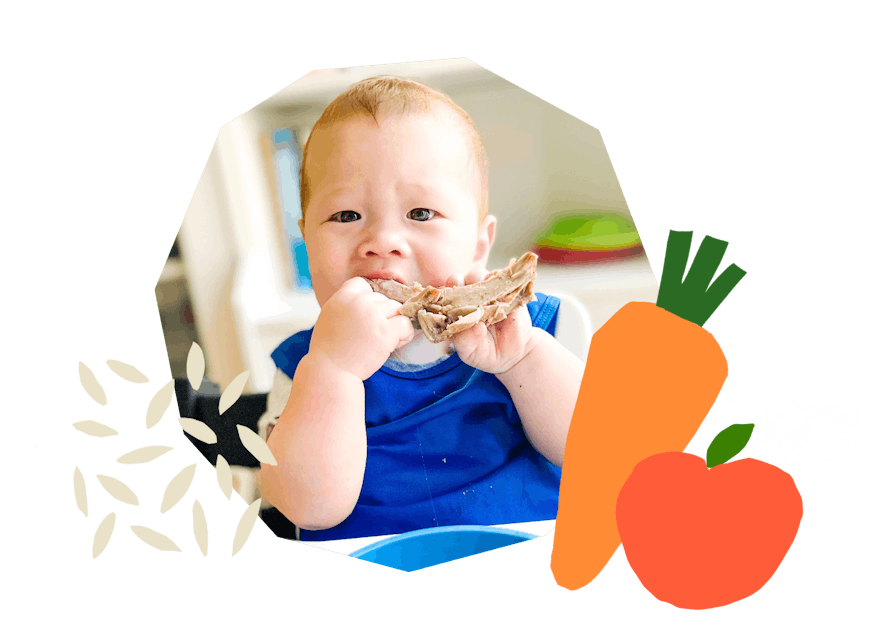
The Program Baby-Led Weaning with Katie Ferraro
A step-by-step digital program for starting solid foods safely and navigating the original 100 FIRST FOODS™ meal plan with baby-led weaning.
 EXPERT-LED, PROVEN APPROACH TO EATING REAL FOOD
EXPERT-LED, PROVEN APPROACH TO EATING REAL FOOD CONCISE VIDEO TRAININGS TO MASTER BABY-LED WEANING
CONCISE VIDEO TRAININGS TO MASTER BABY-LED WEANING 100 FIRST FOODS DAILY MEAL PLAN WITH FOOD PREP VIDEOS
100 FIRST FOODS DAILY MEAL PLAN WITH FOOD PREP VIDEOS
Baby-Led Weaning for Beginners Free Workshop
Is your baby ready to start solid foods, but you’re not sure what to do? Register for this free online video workshop and learn how to give your baby a safe start to solid foods using baby-led weaning. Everyone on this free training receives a copy of Katie’s original 100 FIRST FOODS™ list. You can take this workshop right now, later today when your baby naps, or tomorrow…whatever works for you!
Get baby-led weaning recipes and tips delivered to your email inbox.